Exploring bruxism
Sports psychologist Niamh Flynn looks at the possible causes and potential treatments for patients who grind their teeth
Bruxism is a parafunctional habit affecting 20 per cent of people while awake (awake bruxism) and 8 per cent of people while sleeping (sleep bruxism) and is characterised by grinding and/or clenching of the teeth (Amorim, Firstoff, Vieira, Costa & Marques, 2016).
The diagnosis of bruxism involves consideration of history, tooth mobility, tooth wear, sensitivity of teeth to cold or air and clicking or locking of temporomandibular joint (Shetty, Pitti, Babu, Kumar and Deepthi 2010).
The aetiology of bruxism is a mystery. Possible causes which have been proposed include anxiety, stress, abnormal alignment of teeth, sleep problems such as sleep apnoea and an aggressive or hyperactive personality type (mayoclinic.org).
Psychotropic medications, for example, antipsychotics and antidepressants, specifically selective serotonin reuptake inhibitors (SSRIs), have also been implicated in bruxism (Winocur, Gavish, Voikovitch, Emodi-Periman and Eli, 2003).
Milanlioglu(2012) reported a case study of a 38-year-old depressive woman who had paroxetine-induced bruxism. After a few weeks, the paroxetine was discontinued but the bruxism persisted. The patient reported symptoms of teeth clenching, loud grinding noises during sleep and jaw pain and stiffness in the morning.
Buspirone was prescribed to this woman and, within two weeks of beginning the treatment, the bruxism symptoms were gone and the jaw pain and stiffness had disappeared.
The author of the case study emphasised the need for clinicians to be aware that antidepressants can cause bruxism and that buspirone can be an effective treatment for the bruxism linked with the use of such medications.
Milanlioglu (2012) also noted that there is some evidence (Jaffee and Bostwick 2000) suggesting that the SSRI-induced bruxism is linked with excessive serotonergic action on the meso-cortical neurons arising from the ventral tegmental area.
The theory suggests that this causes a deficit in dopamine which in turn leads to akathisia and akathisia-like movement of the jaw muscles and in turn leads to bruxism.
- Fig 1 Creating an occlusal splint for patients who grind their teeth
- Fig 2 Minimising wear and tear of teeth with an occlusal splint
- Fig 3 One of the earliest references pertaining to the use of a ‘night guard’ for the treatment of bruxism is Matthews (1942)
In spite of sleep bruxism being the third most frequent parasomnia, surprisingly little is known about the epidemiology of sleep bruxism and its risk factors in the general population (Ohayon, Kasey and Guilleminault 2001).
The potential consequences, Ohayon, Kasey and Guillerminault (200ı) pointed out, are not limited to dental or muscular complaints and will often be co-morbid with anxiety and sleep disordered breathing. The authors cautioned that further education is necessary to inform physicians and dentists alike about these pathologies.
They cited the minimal criteria for sleep bruxism outlined by the International Classification of Sleep Disorders Manual (ICSD).
These include the presence of teeth grinding during sleep and at least one of the following: muscular discomfort, sound associated with teeth grinding and abnormal tooth wear.
Affected individuals, they pointed out, rarely seek help, and in their comprehensive study, which involved interviews with 13,057 participants, the researchers reported that 23 per cent of participants stated that they needed dental work because of the tooth grinding, 8.1 per cent claimed they had discomfort in their jaw muscles and 23.3 per cent reported that their partners sleep was disturbed as a result of the sound of their teeth grinding.
Snoring, Obstructive Sleep Apnoea (OSA) syndrome, hypnagogic and hypnopompic hallucinations, sleep talking and sleep paralysis were significantly more prevalent in the sleep bruxism group and in the tooth grinding-alone group than in the rest of the sample.
Awareness of the potential causes of bruxism can provide informed treatment choices. A literature review by Shetty, Pitti, Babu, Kumar and Deepthi (2010), recommended three types of intervention, namely occlusal correction, behavioural changes and a pharmacological approach.
The pathophysiological factors cited in the review included disturbances in the central neurotransmitter system where there is a disturbance in the indirect and direct pathways of the basal ganglion leading to movement disorder results similar to Parkinson’s disease.
The imbalance, the authors explained, occurs with disturbances in the dopamine medicated transmission of action potential. They suggested that, given that nicotine stimulates central dopaminergic activities, this could explain why smokers are twice as likely to suffer with bruxism than non-smokers.
The review also reported evidence to suggest a potential relationship between bruxism and a variety of psychosocial factors but cautioned that due to the absence of large-scale longitudinal trials the evidence is inconclusive.
The authors also found that the majority of studies investigating a link between occlusal factors and clinically established bruxism showed no relationship.
- Fig 4 Worn-down, cracked or chipped tooth enamel, tooth indentions on the tongue and wobbly teeth can all be indicative of bruxism
- Fig 5 Emotional and physical stress are potential causes of bruxism
Nonetheless, the review concluded that bruxism can be managed by occlusal appliances, psychological intervention and changes in lifestyle. The NHS caution that, while occlusal splints can help manage bruxism, they are designed to control the condition not to cure it.
To treat the cause, the NHS recommend considering psychological interventions such as cognitive behavioural therapy (CBT) and exercise such as yoga to reduce stress. Prevention is better than cure as the saying goes and the NHS guidelines include several strategies which they posit can be beneficial in preventing bruxism.
These include regular dental check-ups, quitting smoking, reducing alcohol intake, an awareness of how stress and anxiety are affecting mood, and relaxation techniques such as massage which may assist.
Other practical suggestions include avoidance of chewing pens and pencils and consciously relaxing the jaw muscles when one becomes aware that they are grinding their teeth (www.nhs.uk). A detailed case history for any patient documenting the potential triggers will thus clearly determine the treatment choices.
In instances where psychological intervention is recommended, there is evidence to suggest that hypnotherapy can help too. Clarke and Reynolds (1990) employed hypnotherapy with eight participants who presented with bruxism.
Results showed a significant decrease in EMG activity, less facial pain and their partners reported a decrease in the sound of teeth grinding both immediately after intervention and four to 36 months after.
As a sport psychologist who specialises in hypnotherapy I can testify to the usefulness of psychological intervention in the form of hypnotherapy for people who grind their teeth.
Within as few as four consultations, one of which involves finding the psychological triggers for the bruxist behaviour, relief from teeth grinding and the associated headaches can be achieved. Once relief is established relevant hypnosis MP3s are a useful way of re-enforcing the thought processes which enable the individual to maintain a relaxed jaw during the day and at night.
Left untreated, bruxism can lead to a variety of symptoms including jaw pain, headaches, teeth which are chipped, worn enamel and sensitivity.
Clearly, more research is required into the causes and treatment of bruxism, and perhaps this is a condition which requires a multifactorial approach towards treatment.
It would be useful for dentists to inform their patients of the progress in this particular area of research and let them know about the potential lines of treatment that are available. This could potentially improve quality of life and decrease the level of pain.
About the author
Niamh Flynn is a sports psychologist based at the Galway Clinic, a private hospital in the west of Ireland. She has a masters in sports medicine (MMEDSCI) from the University of Sheffield, a masters in business administration (MBA) from Michael Smurfit Business School UCD, a bachelor of arts in psychology (BA), a diploma in hypnotherapy and psychotherapy (DHP) and is a certified instructor with the National Guild of Hypnotists (NGH). Her PhD research involved a randomised controlled trial which designed and implemented an online hypnotherapy programme
for migraine sufferers.
References
American Sleep Disorders Association, Diagnostic Classification Steering Committee. International classification of sleep disorders: diagnostic and coding manual (ICSD). Rochester, MN: American Sleep Disorders Association, 1990.
Amorim, C.S.M., Firsoff, E.F.O., Vieira, G.F., Costa, J.R., Marques, A.P. (2014). Effectiveness of two physical therapy interventions, relative to dental treatment in individuals with bruxism: study protocol of a randomised clinical trial. www.trialsjournal.com
Clarke, J.H. & Reynolds, P.J. ( 1991). Suggestive Hypnotherapy for nocturnal bruxism. A Pilot Study. Am J Clin Hypn. 33(4), 248-253.
Jaffee MS, Bostwick JM. (2000). Buspirone as an antidote to venlefaxine-induced bruxism. Psychosomatics. 41:535-36.
Milanlioglu, A. (2012). Paroxetine-induced severe sleep bruxism successfully treated with buspirone. Clinics. 67(2): 191-192.
http://www.nhs.uk/Conditions/teeth-grinding/Pages/Treatment.aspx
Ohayon, M., Kasey, Li., Guilleminault, C. (2001). Risk factors for sleep bruxism in the general population. Clincial Investigations: Sleep. 119(1): 53-61.
Shetty, S., Pitti, V., Babu, C.L.S., Kumar, G.P.S. & Deepthi, B.C. (2010).
Bruxism: A Literature Review. The Journal of Indian Prosthodontic Society.
10(3):141-148.
Winocur E, Gavish A, Voikovitch M, Emodi-Perlman A, Eli I. Drugs and bruxism: a critical review. J Orofac Pain. 2003;17:99-111.
Matthews, E. (1942). A treatment for the teeth-grinding habit. Dental Record, 62, 154-155.
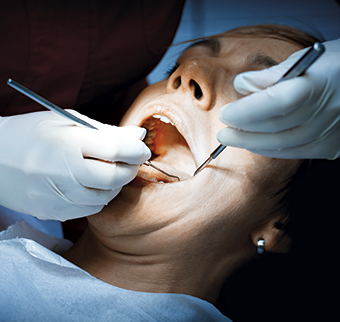
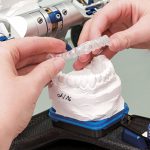
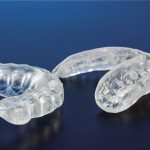
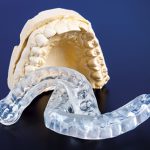
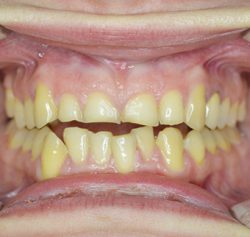
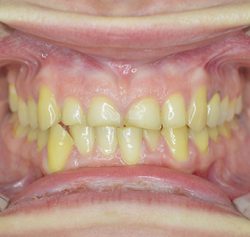
You must be logged in to post a comment.